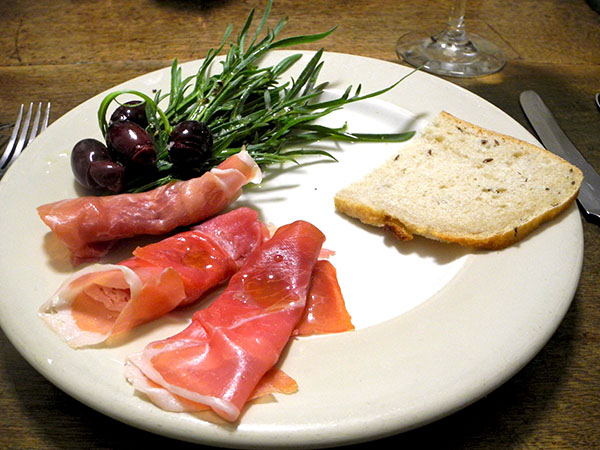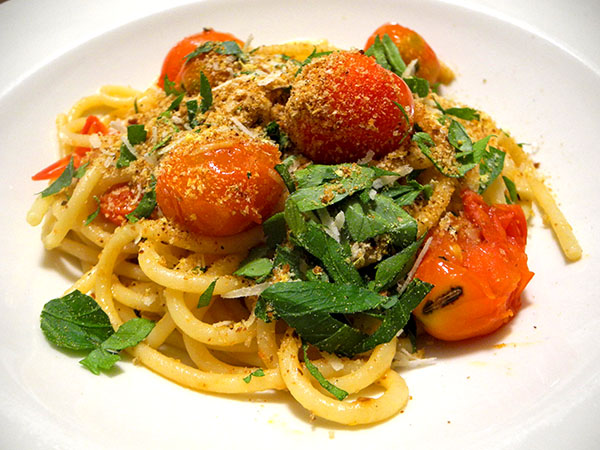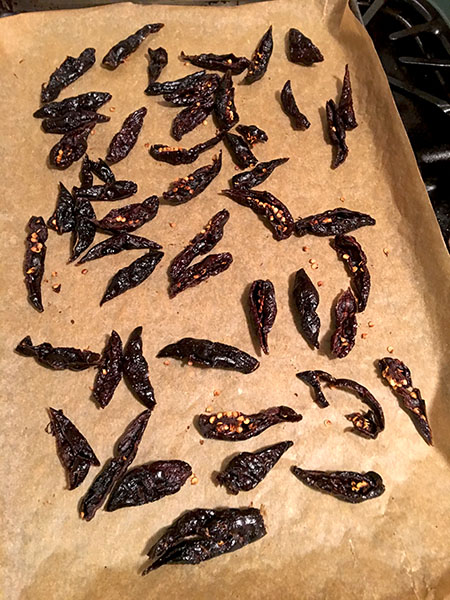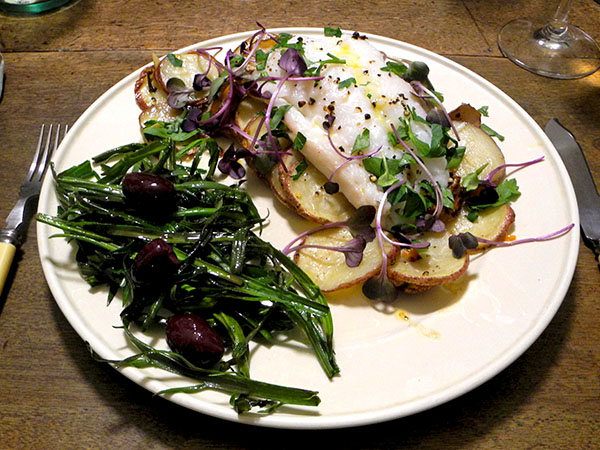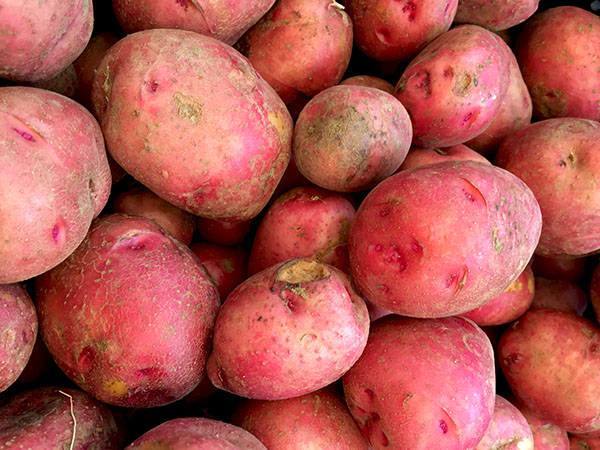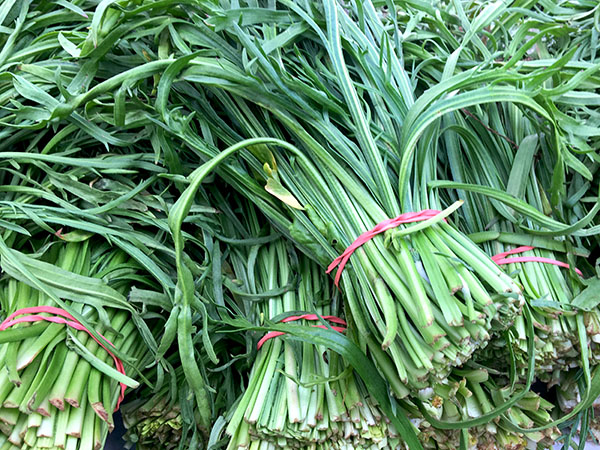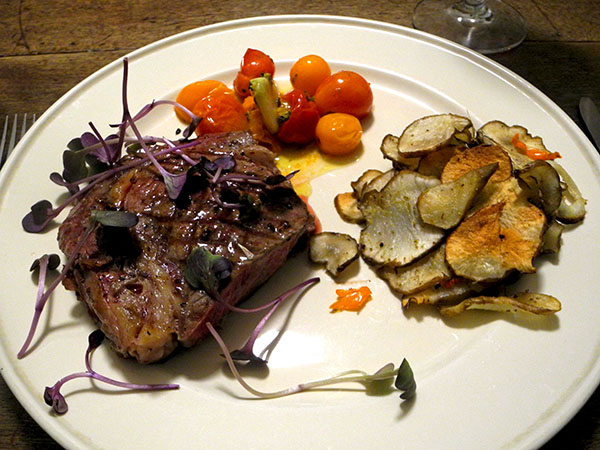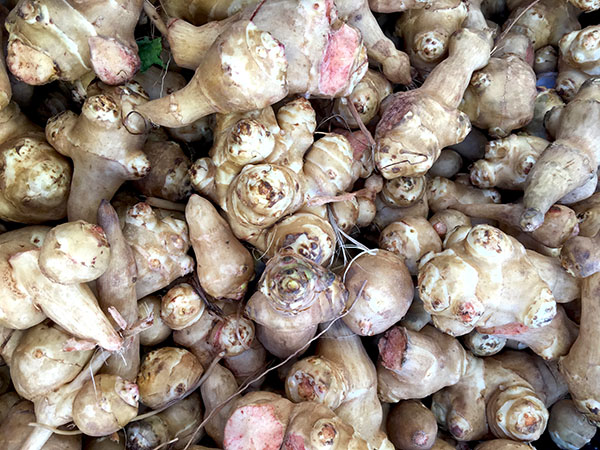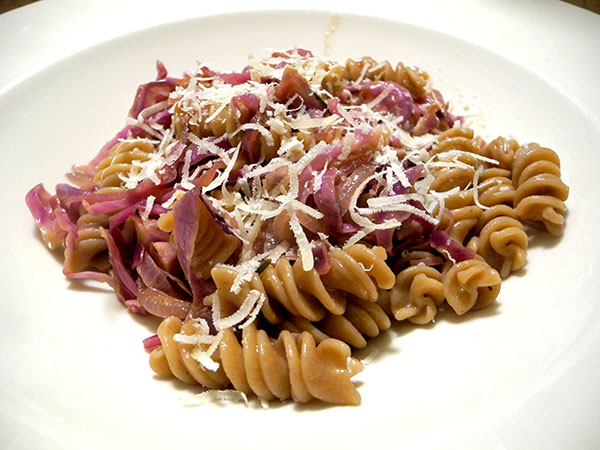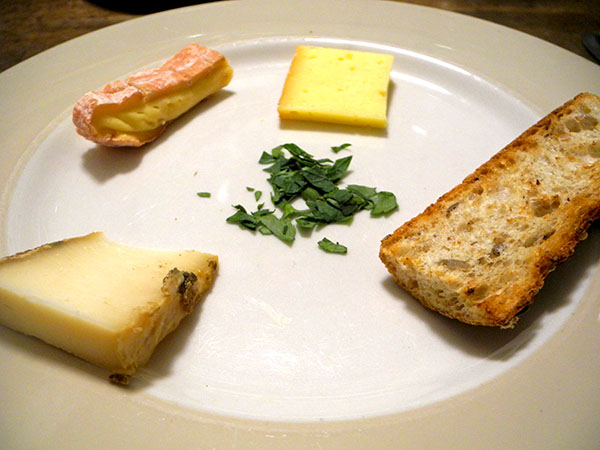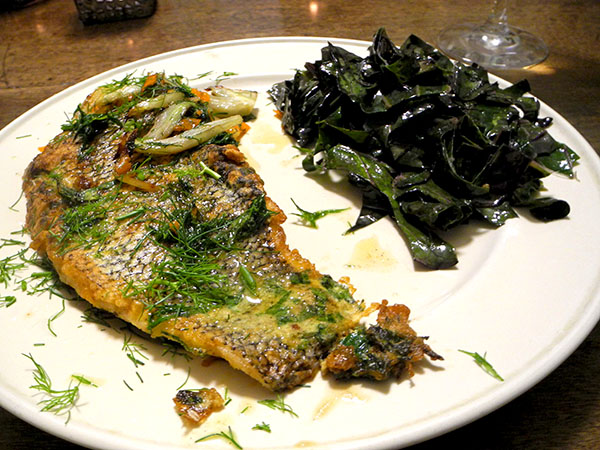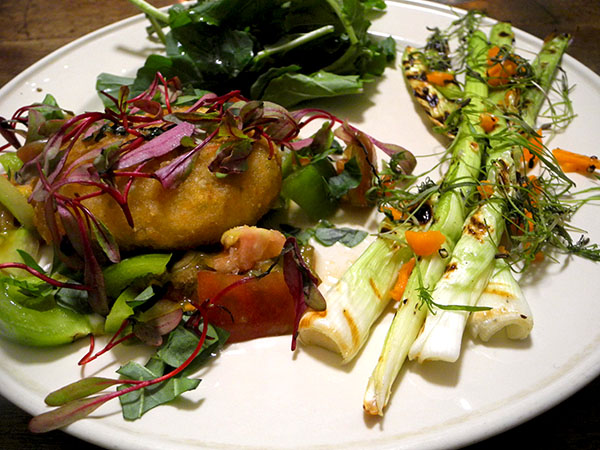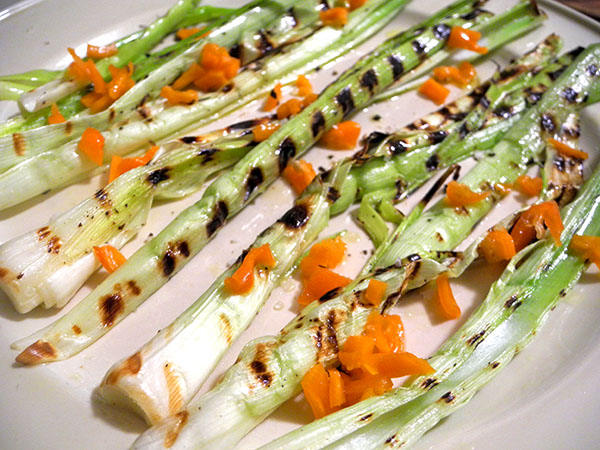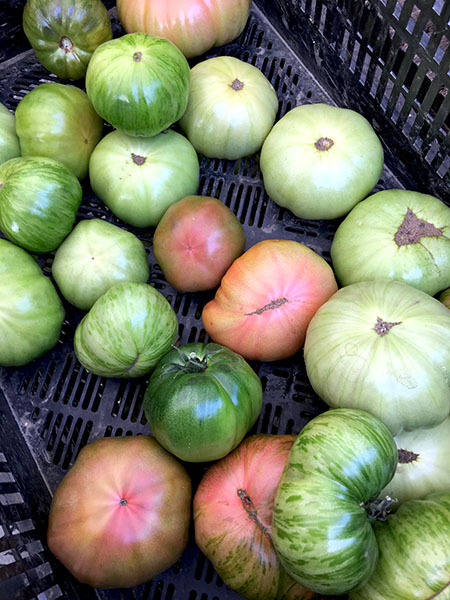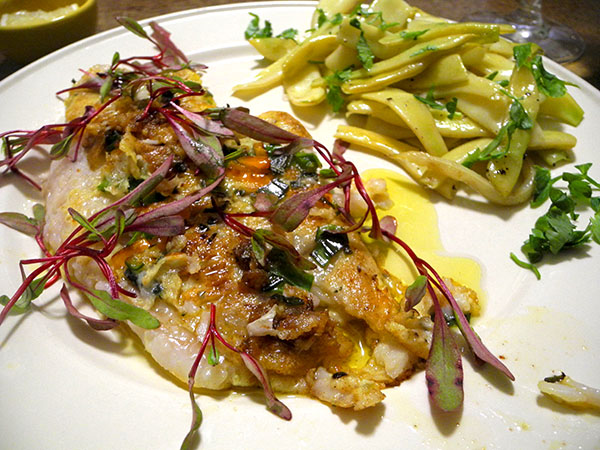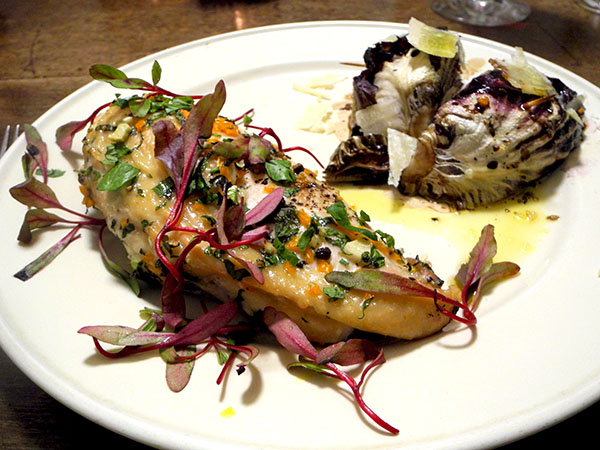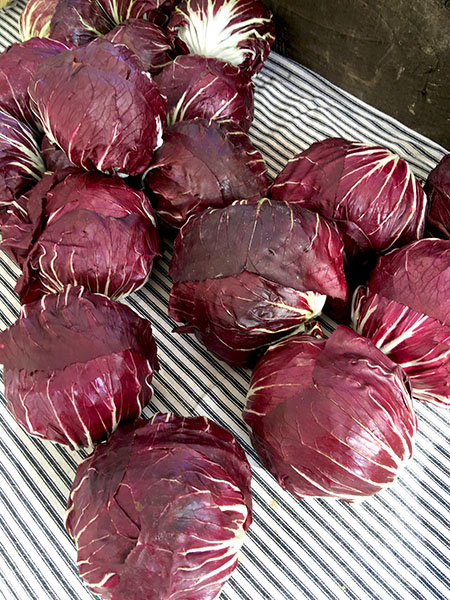
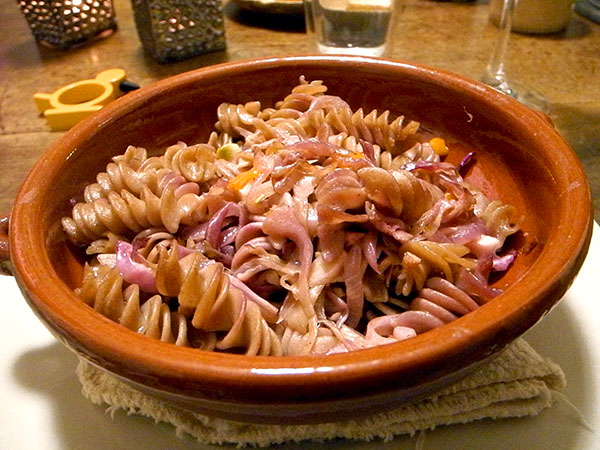
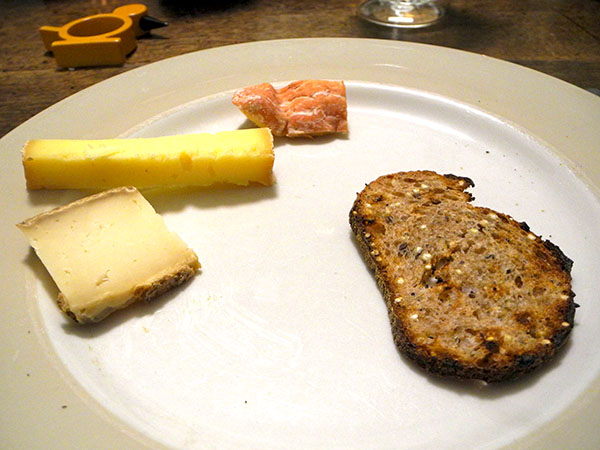
Yoeman service.
Because of our schedules lately, all of the meals I’ve recently prepared have had to be somewhat improvised, even a bit sketchy, and often involved leftovers, and what I call ‘hangers on’ (ingredients that have been around for a while and which I judge really should make it into a meal soon).
This time there was a fresh, unplanned guest: the beautiful contents of a ‘goody bag’ from our previous night’s outing at Untitled, the restaurant that’s a part of the new Whitney Museum. The farmers around whose produce last night’s dinner was built, Chris Field and Jessi Okamoto, gave each of the dinner guests a selection of chicories and other greens from their vast lands (8 acres in eastern Pennsylvania) as each of us was leaving. We got 2 of them, so we will all be seeing some of their work on this site for a little while.
These meals at home have all been yeoman service, and are appreciated, but I’m actually getting physically and emotionally anxious after being absent so long from my other safe place, the Union Square Greenmarket, and from the pleasures of real cooking.
I’ll be visiting both tomorrow.
- two ounces of La Quercia Lomo, in thin slices (this cured pork tenderloin turns out to be more than just a Spanish thing, viz. lonza di maiale stagionata) from Whole Foods, drizzled with a very small amount of a very good olive oil, Campania D.O.P. Penisola Sorrentina ‘Syrenum’
- served with a colorful mixture of various chicories and tender greens, a gift from the people of Campo Rosso Farm, dressed with Maldon salt, freshly ground pepper, the Campania olive oil, and a small drizzle of white balsamic vinegar
- slices of Orwasher’s ‘Righteous Corn Rye’ boule ((here the word, ‘corn’ derived from ‘korn’, means grains or kernels, and it has usually meant rye grain in Jewish Eastern Europe), from Chelsea’s Down to Earth Farmers Market
The main course really was a straight leftover, and needed no updating; the pasta and its sauce having retained the sturdiness and rich savoriness that had not asked for anything extra a few nights before.
- leftover Sfoglini chestnut fusilli and its sauce, of red onion from Stokes Farm, rosemary branches from Stokes Farm, red cabbage from Tamarack Hollow Farm, a little balsamic vinegar, and a heatless Habanada pepper form Norwich Meadows Farm (I forgot to serve it with the freshly-grated Parmigiano Reggiano Vacche Rosse from Buon Italia I had sprinkled on top the first time around
There was cheese.
- 3 Consider Bardwell Farm selections, ‘Manchester’, a medium-hard goat cheese‘, Experience’, a pasteurized, somewhat soft cow cheese, and ‘Pawlet’, a medium-hard cow cheese, served with toasts made from an Orwasher’s multigrain, seeded baguette
- the wine throughout was an Italian (Marche) white, Saladini Pilastri Falerio 2015, from Phillippe Wines
- the music throughout was Puccini’s ‘Turandot’, a performance of Francesco Molinari-Pradelli conducting the Rome Opera House Orchestra and Rome Opera House Chorus, with Birgit Nilsson, Franco Corelli, Ida Farina, Renata Scotto, and others
